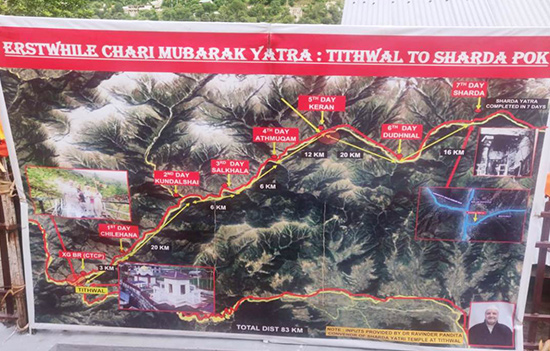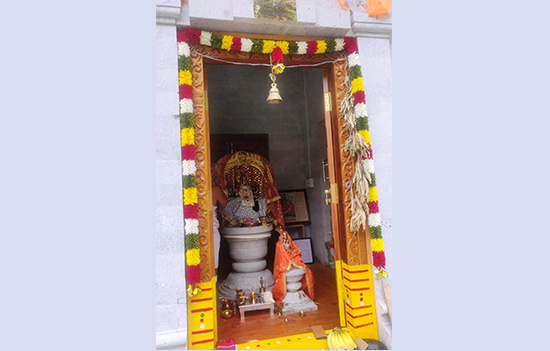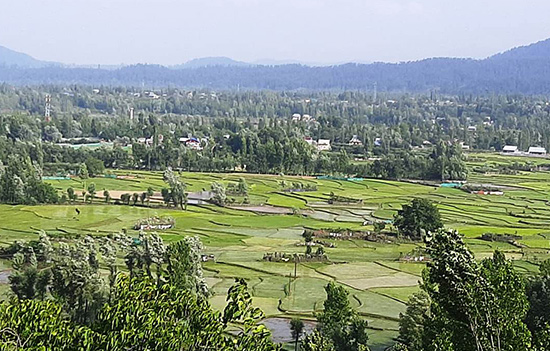- Briefly know
about the Sharada Temple, its importance-history and how to reach.
“Namastey Sharada Devi Kashmir PurVasini Tvam Ham
Prartheye Nityam Vidya Danam Che De hi mey”
Translated as ‘Salutations to you, O Sharada, O Goddess, O one who resides in Kashmir. I pray to you daily, please give me the charity of knowledge’
Key points:
1. Ma Saraswathi was the reigning Goddess of Kashmir.
2. Sankaracharya walked all the way to Kashmir from Kerala. His legacy continues in the form of Sharda Mutts at each corner of the country – since the 8th Century.
3. The Sharda University shared preeminence with contemporaries like Taxila and Nalanda.
4. Between
6th to 12th centuries it was a prominent temple university in the Indian
subcontinent known in particular for its Library. Many scholars throughout the
world visited the library for updating their knowledge.
5. The Saraswats spread across the West Coast of India claim their descent from Kashmir.
6. Ma Saraswathi herself has just a few dedicated temples, prominent ones being in Basara and Koothanoor, besides the Sharada Temples run by the Shankara Mutts.
In what
appears to be an eternity ago, the village of Sharada, now in PoK, on the banks
of the Kishenganga / Neelam River, was the revered deity and the must-go pilgrim
destination for Sharada devotees.
The Sharada
Yatra started from Titwal, and via Keran reached Sharada. But after the tribal
invaders snatched PoK away in 1948, the temple was torn down, leaving behind
ruins. The Sharada Yatra trail was rubbed off the map.
 Earlier route to Sharada.
Earlier route to Sharada.
We think of
Article 370 modification as merely the freeing of Kashmir from the clutches of
terrorism and the breaking of trade, legal and social barriers. It also marked
the revival of Hinduism in the Valley for the first time after the gruesome
Genocide of 1990.
The Save Sharada Foundation spearheaded the
revival of Sharada worship, starting with the re-establishment of the
Sharada Temple in Titwal. Sadly, the Neelam Valley where Titwal is located had
been completely expunged of its glorious Hindu past.
With the help of the new post-370 government and the Army, the Sharada Temple was rebuilt on the banks of the Kishenganga/ Neelam River, just across from PoK, a stone’s throw away on the opposite bank. The Temple was built in super quick time with aid pouring in from all quarters, including from the Sankara Mutt in Sringeri which also donated and consecrated the Panjaloka murty of Goddess Sharada.
 Close-up of deity.
Close-up of deity.
The temple was
inaugurated in March 2023. Since then, there is a constant flow of pilgrims.
When I first visited in June 2023, just 1.5 months after it opened doors to
pilgrims, I was surprised to see even devotees from abroad. This is in
addition to pious Kashmir Pandit families for whom it was a homecoming and a
dream come true.
Facilities
in Titwal were meager, hardly any lodging and no satvik food. But the
enthusiastic locals, all of them non-Hindu, were eager to welcome the pilgrims.
The local economy has grown manifold since the temple opened.
The Temple
itself is expanding to provide more facilities to pilgrims. Recently, a bathing
Ghat was built on the banks of the Kishenganga River.
But the
Temple in Titwal is just the means to the end to accomplish the goal of
reconstructing the main Temple at Sharada in PoK and reviving the Sharada Yatra
of yesteryears. The original Temple at Sharada is in ruins. A couple of months
ago, the Pakistan Army was found to be desecrating it further.
But in the
fast-changing geopolitical scenario and the bankruptcy of the Pakistani
economy, encouraging pilgrim tourism (like Kiratpur Sahib) could be the tonic
to give a shot in the arm by bringing in extra rupees for Islamabad.
Reaching Titwal is now easier thanks to excellent roads from Srinagar via Kupwara. Yes, during winter, the Sadhna Top Pass gets snow-bound and closes down temporarily, but in summer, Titwal may turn out to be a day trip from Srinagar. The journey is through beautiful landscapes – of terraced rice fields, pine forests and bewitching Valley views as one descends to Tangdhar and finally reaches the banks of the Kishenganga River. If you choose to stay back, there are a few home stays now; the Temple itself has a small yatri niwas.
 View enroute.
View enroute.
Om
Arham Mukha Kamal Vaasinee, Paapaatma Kshayam KaariVad Vad Vaagwaadinee
Saraswati, Aing Hreeng Namah Swaaha!!
To read all articles
by author Article pics by Kankan Mukherjee.
Author H V Kumar runs a very popular Facebook page on road travel. “There is nobody as expert as HV Kumar (HVK) on knowledge about Indian Highways and Automotive Transport. The magnitude and the detailing of precious and up to date information he has is mind boggling and absolutely unmatched.” To access FB page click HERE
Some more
insights from article in Jammuvirasat.com
1. Last
repair of the original temple was done by Maharaja Gulab Singh in the 19th
century.
2. Sharada
Peeth is the first place of worship of Shakta sect. Vaishnudevi and Kheer Bhavani
come later.
3. Sharada Peeth
is the confluence of three powers namely Sharda- education, Saraswati-knowledge
and Vagdevi (goddess of speech)
4. Sharda
script is the main script of Kashmir.
5. Sankaracharya
and Ramanujacharya both came here.
From a firstpost.com
article
1. It is one
of the 18 Maha Shakti Peethas.
2. The temple was also
once regarded as one of the foremost centres of higher learning of Vedic works,
scriptures and commentaries.
Also see albums
1. Sringeri Mutt
2. Verinag i.e.
the source of the river Jhelum
3. Martand
Surya Mandir
4. Amarnath Yatra